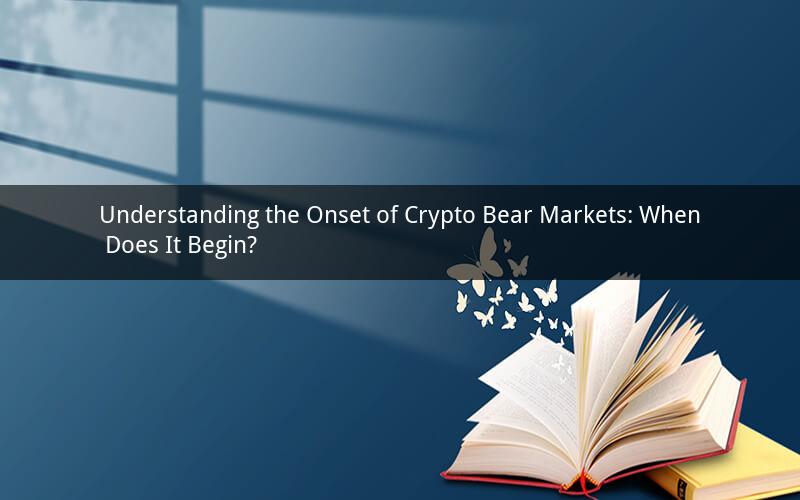
Introduction:
The cryptocurrency market has experienced several bear markets over the years, leading to significant price declines and investor anxiety. Determining the exact moment when a bear market begins is crucial for investors to make informed decisions and mitigate potential losses. This article delves into the factors that contribute to the start of a crypto bear market and discusses the indicators that signal its onset.
1. Historical Context:
To understand when a crypto bear market starts, it is essential to examine past bear market occurrences. The first major bear market in the cryptocurrency market occurred in 2011, followed by another significant downturn in 2014 and 2018. Analyzing these historical patterns can provide insights into the triggers and durations of bear markets.
2. Market Sentiment:
Market sentiment plays a crucial role in determining the start of a bear market. When the majority of investors become overly optimistic, it often leads to speculative bubbles and excessive price inflation. Conversely, a shift towards pessimism can trigger a bear market. Various indicators, such as social media sentiment, trading volume, and investor surveys, can help identify the shift in sentiment.
3. Regulatory Factors:
Government regulations and policies can significantly impact the cryptocurrency market. The imposition of strict regulations or the withdrawal of supportive policies can lead to a bear market. For instance, China's ban on cryptocurrency mining and trading in 2021 had a substantial impact on the market, causing prices to plummet.
4. Macroeconomic Factors:
The broader economic environment also influences the start of a bear market. Economic downturns, inflation, and geopolitical tensions can all contribute to a bear market in the cryptocurrency market. For example, the 2020 COVID-19 pandemic caused a global economic recession, leading to a bear market in cryptocurrencies.
5. Technical Analysis:
Technical analysis involves studying past price movements and using various indicators to predict future market trends. Some commonly used indicators to identify the start of a bear market include moving averages, trend lines, and volume analysis. By analyzing these indicators, investors can gain insights into the potential start of a bear market.
6. Market Manipulation:
Market manipulation can also trigger a bear market. Large players, such as whales, can manipulate prices by buying or selling massive amounts of cryptocurrencies. Their actions can create artificial price spikes or crashes, leading to a bear market.
7. Market Maturity:
As the cryptocurrency market matures, it becomes more susceptible to bear markets. As more investors enter the market, the possibility of speculative bubbles and excessive price volatility increases. The increased liquidity and participation can also make it more challenging to predict the start of a bear market.
8. Predicting the Onset:
Predicting the exact start of a bear market is challenging due to the complex and unpredictable nature of the cryptocurrency market. However, by analyzing the factors mentioned above, investors can make informed assumptions about the potential onset of a bear market.
Conclusion:
Determining when a crypto bear market starts requires a comprehensive understanding of various factors, including historical context, market sentiment, regulatory factors, macroeconomic conditions, technical analysis, market manipulation, and market maturity. By analyzing these indicators, investors can better prepare themselves for potential market downturns and make informed decisions to mitigate losses.
Questions and Answers:
1. What is the primary factor that triggers a bear market in the cryptocurrency market?
Answer: The primary factor that triggers a bear market in the cryptocurrency market is a shift in market sentiment, often caused by excessive optimism or pessimism.
2. How can government regulations impact the start of a bear market?
Answer: Government regulations can impact the start of a bear market by imposing strict policies or withdrawing supportive measures, leading to market uncertainty and price volatility.
3. Can market manipulation alone trigger a bear market?
Answer: While market manipulation can contribute to a bear market, it is usually a secondary factor. The primary trigger is often a shift in market sentiment or broader economic conditions.
4. Why is predicting the start of a bear market challenging?
Answer: Predicting the start of a bear market is challenging due to the complex and unpredictable nature of the cryptocurrency market, which is influenced by numerous interrelated factors.
5. How can investors prepare for a potential bear market?
Answer: Investors can prepare for a potential bear market by diversifying their portfolios, conducting thorough research, staying informed about market trends, and maintaining a long-term investment perspective.